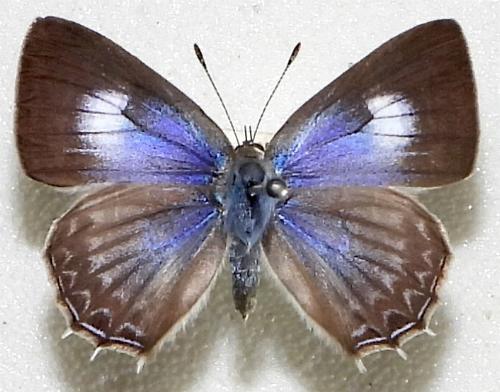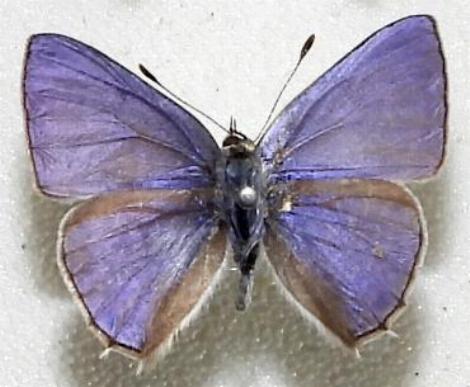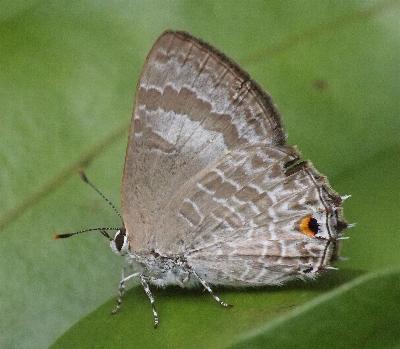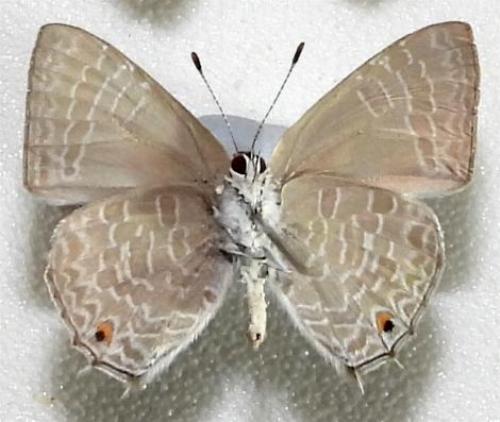
| Pale Ciliate-blue (previously known as Dipsas lycaenoides) LYCAENESTHINI, POLYOMMATINAE, LYCAENIDAE, PAPILIONOIDEA | (donherbisonevans@yahoo.com) and Stella Crossley |

female
(Photo: courtesy of Paul Kay)

| Pale Ciliate-blue (previously known as Dipsas lycaenoides) LYCAENESTHINI, POLYOMMATINAE, LYCAENIDAE, PAPILIONOIDEA | (donherbisonevans@yahoo.com) and Stella Crossley |

female
(Photo: courtesy of Paul Kay)
This Caterpillar can be any colour, from yellow through green to purple, depending on the colour of the flower buds it is eating. It often has a pale sub-dorsal bands. It has been found feeding on a the flower buds of a wide variety of Australian native and introduced plants, including :
The caterpillars are often attended by ants of a variety of species, including :

The pupa is green with a yellow line along the back. Its length is about 1 cm. It is formed typically on top a foodplant leaf, and held by the tail and a girdle.

The adult male butterflies are lilac on top, whereas the females are brown with lilac toward the base of each wing, and have a white patch in the middle of each forewing. Both sexes have a small tail at the tornus of each hindwing. Underneath, both sexes are fawn with arcs of darker markings, and an orange-edged black spot by the hindwing tail. The butterflies have a wingspan of about 2.5 cms.

The eggs are pale blue, covered in a white polygonal network., and The eggs are shaped like a flattened sphere. They are laid singly on flower buds or young shoots of a foodplant.

Various subspecies are found in
The subspecies godeffroyi (Semper, [1879]) is found in Australia in

Further reading :
Michael F. Braby,
Butterflies of Australia,
CSIRO Publishing, Melbourne 2000, vol. 2, pp. 752-753.
Baron Cajetan von Felder,
Lepidopterorum Amboienensium species novae diagnosibus,
Sitzungsberichte der Kaiserlichen Akademie der Wissenschaften. Mathematisch-Naturwissenschaftliche Classe,
Volume 40, Series 11 (1860), p. 454, No. 21.
 caterpillar |  butterflies |  Lepidoptera |  moths |  caterpillar |
(updated 28 September 2010, 23 December 2023)